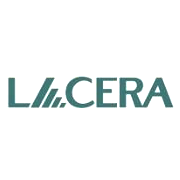CalPERS News for 2020
Although the world has been on lockdown for most of 2020 due to the coronavirus, there’s still some news and updates in the California Public Employees’ Retirement System.
Our experienced CalPERS disability retirement attorneys stay on top of the latest news and changes with CalPERS to ensure we are always providing our clients with the best representation. Here are five CalPERS developments on our disability retirement attorneys’ radar in 2020.
CalPERS Changes Contribution Rates
Every year, the board governing CalPERS establishes member contribution rates for the upcoming year. The rates for fiscal year ending June 30, 2021 have just been released.
While the full actuarial report for California Public Employees’ Retirement System will not be released until later in 2020, the Board announced that the fund amount is $375.7 billion. This amount encompasses a funding ratio of 70%, up slightly from 69.5% as of June 30, 2018. Employer contributions for three out of five categories of state employees has increased, while two of the categories have shown a slight decrease.
CalPERS Actuary Releases Numbers
Nina Ramsey, associate pension actuary at CalPERS, reports a couple of significant points: a 6.7% investment return for fiscal year ending June 30, 2019, implementation of a 20-year amortization policy as opposed to 30 years, and a state contribution increase of $2.5 billion. However, according to Ramsey, the state’s contribution was announced subsequent to CalPERS’ valuation date, so it will not be reflected in the funded status until the June 30, 2020.
The expected contribution rate for fiscal year 2021 shows an increase of $374 million over 2019, for a total of $7.3 billion. According to Ms. Ramsey, there are reasons for the increase, most notably the investment loss during the current fiscal year which ends on June 30. CalPERS had assumed an investment return of 7.0% before reduction for administrative expenses, but the actual return was 6.7%, and that loss was added to the amortization schedule.
CalPERS Adopts “Code of Conduct”
Contribution rates were not the only thing addressed by the CalPERS board. In a separate action, the board adopted a new code of contact for board members. Among other things, this one-page document requires board members to behave and speak respectfully, and further contains a provision outlining a policy of “zero tolerance for harassment, discrimination and/or retaliation of any kind.” Additionally, the newly adopted code tightens guidelines on confidential information, stating that any breach of CalPERS’ confidential information would be thoroughly investigated, stressing that disclosure of confidential information is strictly prohibited.
The code also amended its election regulations, which now request that candidates to voluntarily provide pertinent information in their candidate statements, such as that regarding financial solvency, sexual harassment allegations, and any conflicts of interest that may potentially affect their position as a board member. A confidentiality statement is also included, basically affirming the candidate’s agreement to maintain the confidentiality of all non-public CalPERS information.
CalPERS Board Addresses Sexual Harassment
It is not surprising that the CalPERS board’s new code of conduct included a request in candidate statements for disclosure with respect to sexual harassment allegations. In the last board election, former board member J.J. Jelencic ran for a board seat in 2019. However, two female associate government program analysts, both CalPERS staff members, identified themselves as being advocates of the #MeToo movement. As such, they requested that any board members supporting Mr. Jelencic rescind their endorsement. The request was based upon Mr. Jelencic’s having been found to have sexually harassed three co-workers by a state personnel board administrative law judge in 2009.
CalPERS Pension Plan Returns Decline
In a separate discussion, CEO Marcie Frost reported an annual return of -0.4% for the year, 4.6% for the three-years, 4.7% for the five years, 7% for the 10 years and 5% for the 20 years ended March 31.
CalPERS also released updates and information on their responsiveness to the COVID-19 crisis, which can be viewed HERE.
CalPERS Disability Retirement Attorneys
While these statistics and policies may not seem to affect you personally, the attorneys at the Long Beach firm of Cantrell Green monitor and analyze them carefully. These trends may influence how CalPERS administers your retirement fund and could even affect your bottom line. Rest assured that our attorneys keep abreast of what goes on behind the scenes in order to give you the best advice possible in terms of your retirement and pension benefits.
If you have any questions about your benefits, feel free to give our attorneys a call to set up an appointment.
If you are injured on the job close to the time you intend to retire, we would be happy to help you determine your eligibility for disability retirement under the CalPERs system.
CalPERS Disability Retirement Attorneys Consultation: 562-622-4800
This article applies to members of California Public Employees’ Retirement System (CalPERS); and does not reflect the rules, laws or regulations governing how other public retirement systems are administered. If you have question about another public employee retirement system, find your system, below – or call our attorneys at: 562-622-4800

Thank You for Visiting Our Disability Retirement Blog!
Our highly specialized disability retirement attorneys are committed to ensuring that every injured or disabled public employee obtains the disability retirement benefits he or she has earned.
We have successfully filed hundreds of disability retirement applications and appeals – obtaining millions of dollars in disability retirement benefits in our four decades of legal service.
In our Disability Retirement Blog, our attorneys keep you updated on the latest, news and information pertaining to CalPERS, CalSTRS, OCERS, LACERA. SBcera, VCERA & SDCERA disability retirement.











